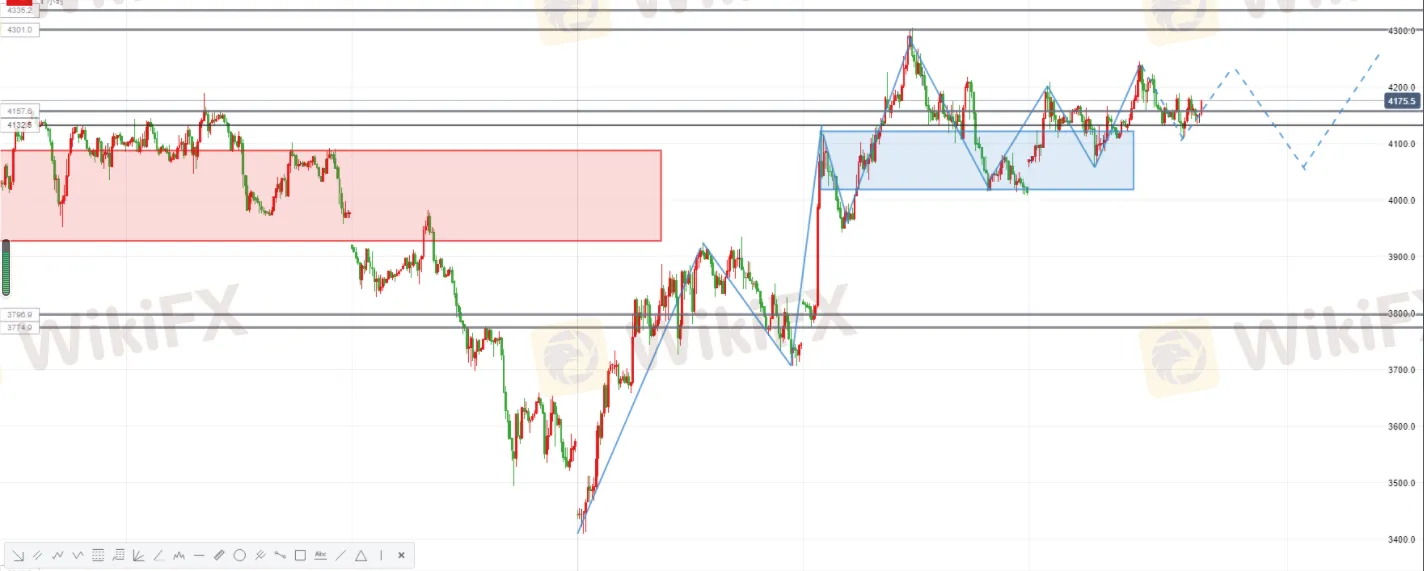简体中文
繁體中文
English
Pусский
日本語
ภาษาไทย
Tiếng Việt
Bahasa Indonesia
Español
हिन्दी
Filippiiniläinen
Français
Deutsch
Português
Türkçe
한국어
العربية
Greater Upside Pressure for Oil as US Returns to Lockdown
Abstract:On Thursday, several regions in the US went back to lockdown amid the worsening pandemic, dragging the DXY down to 92.0. WTI crude has temporarily found some stability at $41.30 but will see further upside pressure in the short term.
WikiFX News (20 Nov.) - On Thursday, several regions in the US went back to lockdown amid the worsening pandemic, dragging the DXY down to 92.0. WTI crude has temporarily found some stability at $41.30 but will see further upside pressure in the short term.
Thursday's data showed that COVID-19-related hospitalizations in the US soared 50% in the past 14 days, the highest number since the pandemic's start. Although several regions have returned to lockdown, the federal government does not appear likely to adopt more shutdowns as Biden said he did not think there would be a need for such a nationwide lockdown.
Markets are betting on the Fed's large-scale asset purchases amid the policy uncertainties and worsening pandemic. As a result, Wall Street equity indices ended slightly higher, while WTI crude is temporarily constructive at $41.30.
With that said, however, markets' risk sentiment will soon be dampened once the Fed launches more fiscal stimulus, which will put greater upside pressure on oil in the short term. Besides, more-than-expected jobless claims last week has fueled worries about the country's economic outlook, hampering the demand for crude oil.
Oil prices are struggling with $41.30 and may find resistance in the short-term uptrend or repeatedly test the $40.0 level. A breach below $39.30 in the near future could pull oil back to $37.50.
All the above is provided by WikiFX, a platform world-renowned for forex information. For details, please download the WikiFX App: bit.ly/wikifxIN

Chart: Trend of Oil Prices
Disclaimer:
The views in this article only represent the author's personal views, and do not constitute investment advice on this platform. This platform does not guarantee the accuracy, completeness and timeliness of the information in the article, and will not be liable for any loss caused by the use of or reliance on the information in the article.
Read more

GemForex | Crude Oil (WTI)
Crude Oil (WTI) - Rebound in the offing?

Oil inches higher as OPEC meetings continue
A stronger than expected payroll report last Friday pushed equity markets to another all-time high. The U.S. economy added 850,000 new jobs during June when the consensus expected 700,000. Whilst the headline number looks good, there’s plenty to be worried about under the hood, as the new jobs are mostly in those sectors of the economy that have reopened. For instance, the leisure and hospitality sectors added 343,000 new jobs, education around 269,000, and the retail sector 67,000. These add up to around 80% of the total; this is great at first glance but not in the long run since these sectors do not drive the productivity or wage growth required for sustainable expansion. In particular, the U.S. economy is 70% consumer driven, which emphasizes the importance of a healthy and wealthy labor market. With the country still 7 million jobs short of pre-pandemic levels and most of the recovery happening in low-paying and low-productivity sectors, there is still a long way to go before the

Oil Countdown: With 48 Hours To OPEC Meeting, Where Are Prices Headed?
It’s the answer every oil trader is seeking, yet will likely get with only a certain degree of accuracy. With about two days left until the all-important ministerial meeting of OPEC+, few things are more crucial than figuring out where oil will be trading before the world alliance of oil producers lays down its policy decisions for December. Dozens of ideas abound on crude prices over the next 48 hours, with as many theories on why they should be so

Oil and euro slip, markets on edge over COVID-19 curbs in Europe
Asian stocks made a soft start to the week on Monday while oil and the euro were under pressure, as the return of COVID-19 restrictions in Europe and talk about hastened tapering from the U.S. Federal Reserve put investors on guard.
WikiFX Broker
Latest News
Spotware Unveils cTrader Store, Global Marketplace for Algo Creators
Elderly Trader Loses RM2.1M in WhatsApp Forex Scam
Gigamax Scam: Tracking Key Suspects in RM7 Million Crypto Fraud
Singaporean Arrested in Thailand for 22.4 Million Baht Crypto Scam
Trader Turns $27 Into $52M With PEPE Coin, Breaking Records
ASIC Sues HSBC Australia Over $23M Scam Failures
CFI Partners with MI Cape Town, Cricket Team
Doo Financial Expands Reach with Indonesian Regulatory Licenses
WikiFX Review: Is IQ Option trustworthy?
5 Questions to Ask Yourself Before Taking a Trade
Currency Calculator



